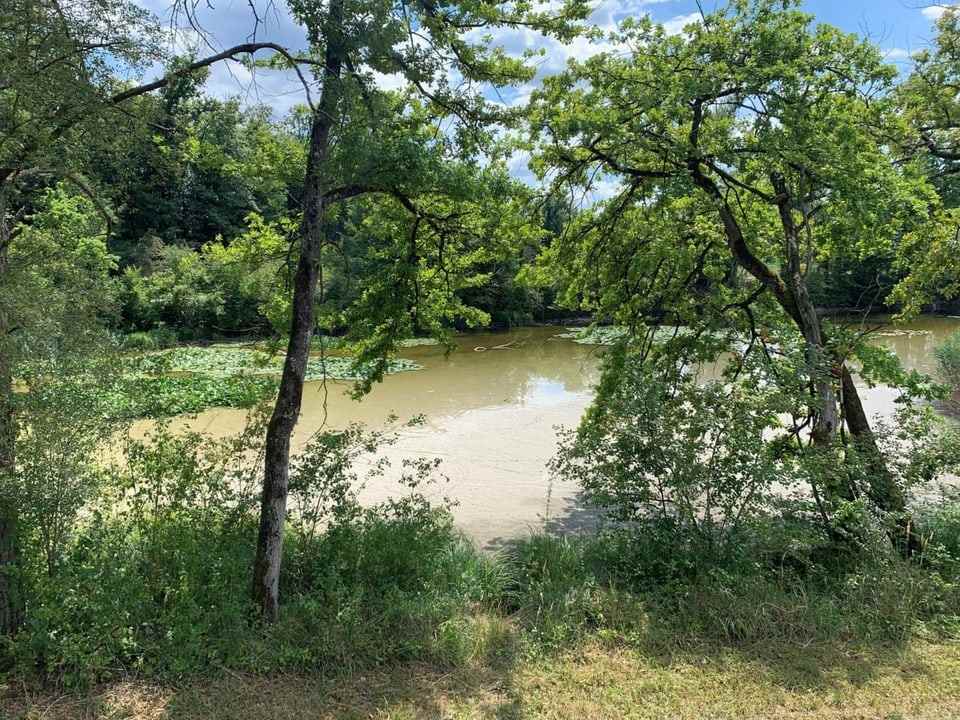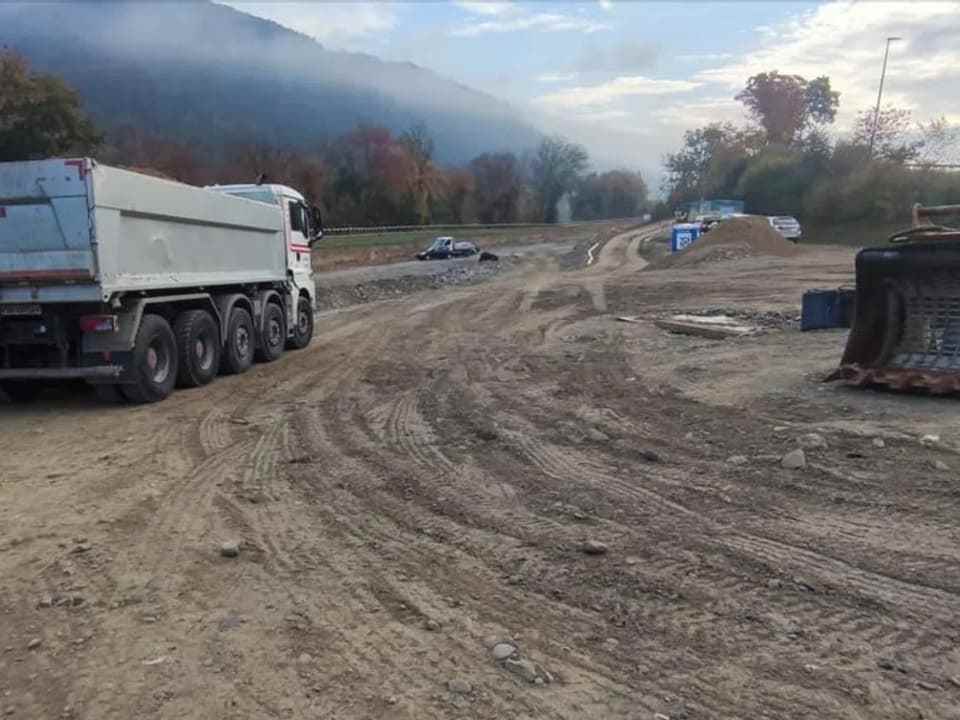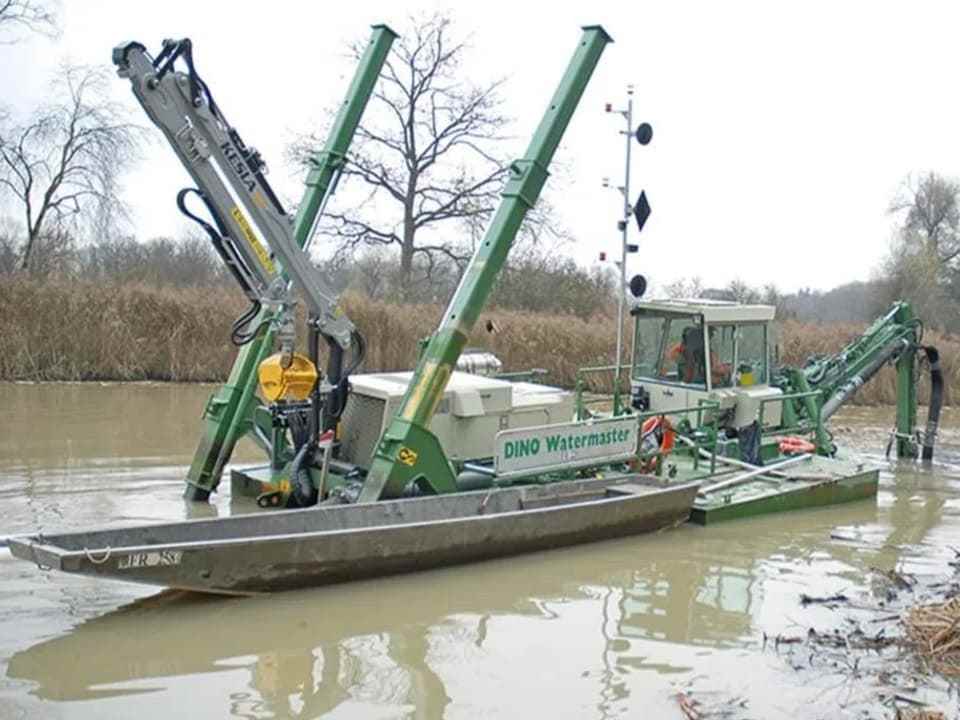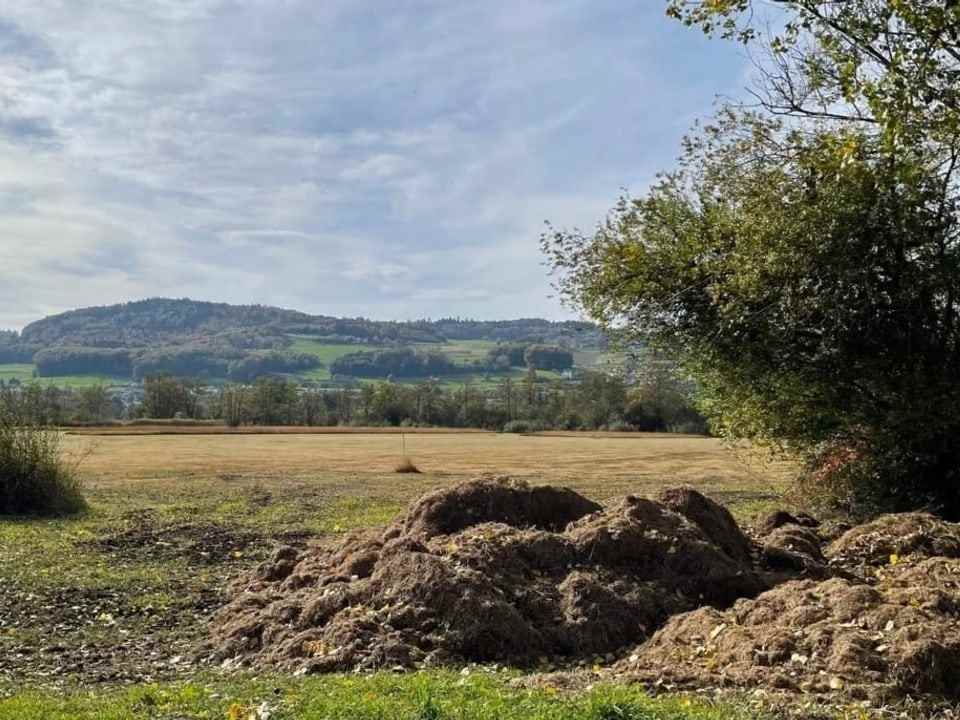People have repeatedly changed river courses, also in Switzerland. Rivers were straightened, a branch was cut off there, and a hydroelectric power plant was installed there.
Artificially separated side arms of the river on the Reuss in Aargau bear witness to this period. One of them is the Stille Reuss, now home to many rare animal and plant species. But they are in danger. Your living space is silting up. Now heavy machines intervene and reactivate the Stille Reuss, for around one million Swiss francs.
Legend:
The suction dredger, which was delivered in mid-December, is intended to reactivate the nature reserve.
zvg/Christian Rechsteiner
A suction dredger is in action in Fischbach-Göslikon (AG) in the Stille Reuss. The dredger – a boat with a shovel and a suction pipe – removes sediment and sand from the water so that the water level rises again and the body of water is less silted up.
The Stille Reuss is an arm of the Reuss, but no water flows through it. Only the front side is connected to the Reuss. Fresh water only gets into the side arm during high water.
However, a lot of sand is washed in at high tide. It settles and is the main reason for silting up. Because the side arm of the river cannot be flushed out, the suction dredger has to go.
The extracted sediments are transported to the shore, drained and later used for agriculture. Further reeds and water lilies are pushed back. The goal: a water level of two meters.
Nature protection for snails, mussels and fish
The construction work should serve rare animal and plant species, says Christian Rechsteiner, project manager in the landscape and water department in the canton of Aargau. Fish are then given more spawning and living space. The oxygen content of the water should increase. “Snail or mussel species can develop again in this way.”
However, a few “dead” zones with sand and sediment are deliberately left. This is where the animals that live on the bottom can withdraw while the suction dredger works.
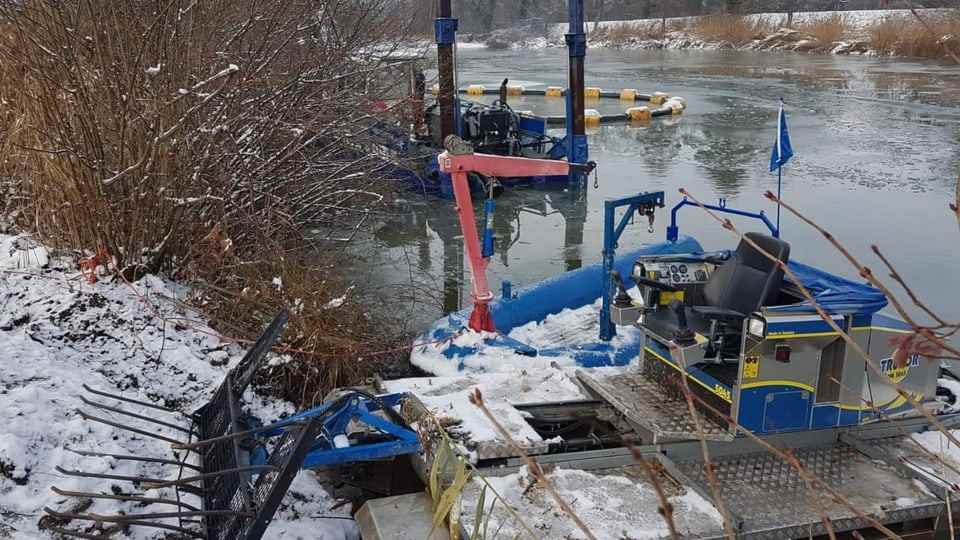
Legend:
The suction dredger in action in Fischbach-Göslikon in mid-December: Work is carried out in winter so as not to disturb breeding birds and other animals.
zvg/Raymond Tellenbach
A new sand trap is being built. In the event of a flood, the sand trap is filled first, the water remains standing and the sediments only settle here and not in the actual body of water. “This will greatly delay the silting up of the Stille Reuss,” says Christian Rechsteiner from Canton Aargau. You no longer have to reverse the siltation every 30 years.
The silting up of the Stille Reuss is greatly delayed by the sand trap.
If the side arm could be reconnected to the river on both sides, would the problem be solved? No, says Rechsteiner. “These are very different habitats, a tributary that flows through it and an oxbow lake. There are completely different dragonfly species in the oxbow lake, for example. It would be technically possible, but a completely different objective of nature conservation,” says the expert.
Tote Reuss will also be upgraded
Next to the Stille Reuss is the Tote Reuss, another, even larger tributary that is no longer connected to the river. The Tote Reuss is considered a wetland of national importance and will not be reactivated as part of the work on the Stille Reuss, but will be upgraded.
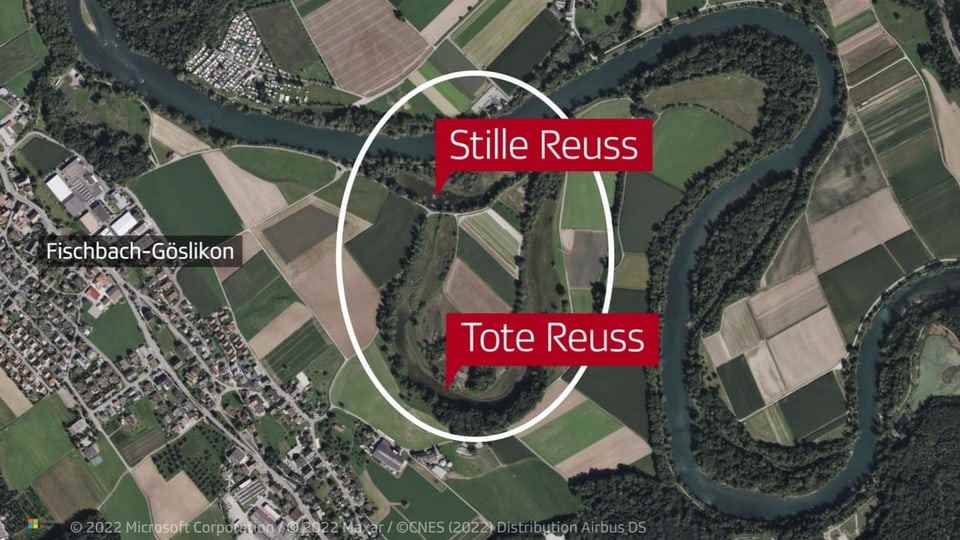
Legend:
The Stille Reuss is only connected to the Reuss on one side. The Tote Reuss, the big loop, is no longer connected to the river.
SRF
“Older ponds are being repaired for the amphibians, a reed meadow is being upgraded and new ponds are being built, for example for the tree frog,” explains project manager Rechsteiner.
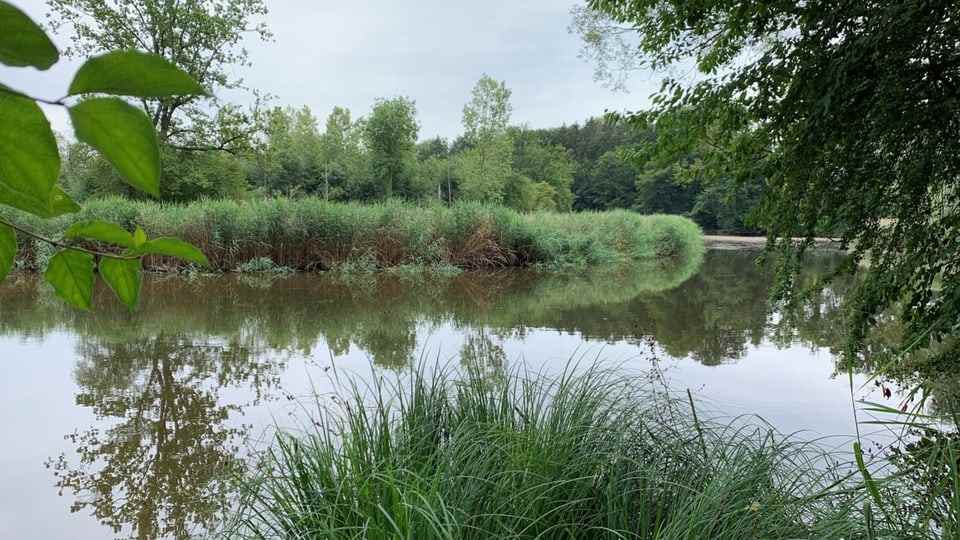
Legend:
The Tote Reuss near Fischbach-Göslikon near Bremgarten: It is also a local recreation area for the region.
SRF
Tote and Stille Reuss are important local recreation areas for the affected Bremgarten region. “It’s a whole area for walking and hiking, with various floodplain areas. If a pond were to dry up, it would be a pity, also because of the diversity of species,” says Raymond Tellenbach, mayor of the small town of Bremgarten.
People understand that you can’t get the sand out with a shovel.
He believes that the population shows understanding for the construction work in the middle of the nature reserve. «In the case of a similar project nearby, in Rottenschwil, there was great interest in the work. People have understood that you can’t get the sand out of the water with a shovel, but only with construction machinery.”
With machines for nature conservation
Heavy machines make sense?
The nature conservation organization Pro Natura also welcomes the work with the suction excavator: “The Stille Reuss is one of the most valuable nature reserves in the canton of Aargau. Such oxbow lakes are among the most species-rich partial habitats in floodplain areas,” says Matthias Betsche, Managing Director of Pro Natura Aargau, on request.
Certain sensible interventions may require the use of heavy machinery.
He regrets that the water canton of Aargau has lost a great many wetlands. Without the help of the people, many floodplain areas would silt up again: “These upgrading projects contribute to the preservation of biodiversity.” Sometimes heavy machines are needed to work as gently as possible. “Such massive deployments only occur every few decades.”
First results show success
Similar to Fischbach-Göslikon, the section near Rottenschwil (AG), also known as “Stille Reuss”, was processed with the suction excavator in 2021. After just one year, the check showed that it worked, says Christian Rechsteiner from the canton of Aargau.
All rare and priority species could be preserved.
The animal and plant species feel comfortable. “All rare and priority species could be preserved in the area”. Without the intervention in nature, this arm of the river would also have silted up.
Canton Aargau is not the only one intervening in nature reserves. The canton of Solothurn, for example, also used a suction dredger to prevent the Inkwilersee on the border with Bern from silting up any more. And in the canton of Zurich, a similar device is used in the floodplain area in Dietikon.
The interventions in our river landscapes from the past will keep experts and nature conservationists busy for a long time to come. The suction excavator is not yet out of work. In any case, work will continue in the nature reserve near Fischbach-Göslikon until spring. In the long term, as planned, this should not be necessary very often.


